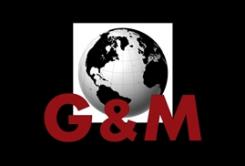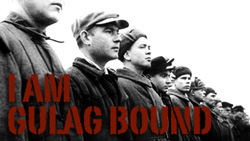Dinesh D’Souza has long been one of America’s shrewdest and bravest political observers. His much discussed Forbes article, “How Obama Thinks,” a prelude to his forthcoming book, The Roots of Obama’s Rage, burnishes that reputation. Indeed, Newt Gingrich describes D’Souza’s thesis as the “most profound insight I have read in the last six years about Barack Obama.”
 In the article, D’Souza argues that President Obama has absorbed much of his governing philosophy from his socialist, “anticolonial” father, Barack Obama Sr. “According to Obama,” writes D’Souza, “his dream is his father’s dream. Notice that his title is not Dreams of My Father but rather Dreams from My Father .”
In the article, D’Souza argues that President Obama has absorbed much of his governing philosophy from his socialist, “anticolonial” father, Barack Obama Sr. “According to Obama,” writes D’Souza, “his dream is his father’s dream. Notice that his title is not Dreams of My Father but rather Dreams from My Father .”
As much as I admire D’Souza, however, I must take issue with his argument. Yes, Obama does seem to espouse a certain inchoate anticolonialism, but the “dreams” do not come so much from his father as his from his mother, and they have been given voice by Obama’s muse, terrorist emeritus Bill Ayers. As a result, Obama’s ideology is less coherent and more malleable than D’Souza would have the reader believe.
D’Souza, like most commentators in the more respectable reaches of the conservative media, goes wrong by denying himself the information unearthed in the blogosphere. He writes of Obama, for instance, “Here is a man who spent his formative years–the first 17 years of his life–off the American mainland.”
Not true. As has now been proved beyond contention, Obama spent the first year of his life in Seattle with his mother, the cruelly named Stanley Ann Dunham, henceforth “Ann.” This is no minor point. Ann left Hawaii within two weeks of Obama’s birth. Barack Obama Sr. may not have seen the boy until he was ten.
When the media attack D’Souza, they add to the confusion with their own unqualified embrace of the official Obama origins story. As a case in point, the Washington Post’s Eugene Robinson dismisses D’Souza’s thesis in part because Barack Sr. “left the family when the future president was 2.”
No, Barack Sr. quit Hawaii for Harvard before Obama’s first birthday, months before Ann and the baby returned to Hawaii. The little family never lived together. There is no evidence of a wedding other than the divorce papers, and Barack Sr. may not have even been the biological father.
Robinson smears Gingrich as “unhinged,” but two years after the election Robinson has still not seen his way through the “improbable love” mythology. Given this failure, it is hard to take anything he says about Obama seriously.
 In fact, the most critical person in Obama’s development was not his illusory father, but his very real mother. In Dreams, Ann is described as a “lonely witness for secular humanism, a soldier for New Deal, Peace Corps, position-paper liberalism.” It showed.
In fact, the most critical person in Obama’s development was not his illusory father, but his very real mother. In Dreams, Ann is described as a “lonely witness for secular humanism, a soldier for New Deal, Peace Corps, position-paper liberalism.” It showed.
In a critical but overlooked scene in Dreams, when Obama’s Indonesian stepfather, Lolo Soetoro, asks his wife to meet some of “her own people” at the American oil company where he worked, she snaps at him, “They are not my people.” Mom raised the young Obama to be wary of the “ugly Americans” in their midst. The only thing exceptional about America, she taught him, was Barry Obama himself.
After returning to Hawaii at the age of ten, Obama was mentored by people who shared his mother’s biases, most critically the communist poet and pornographer, Frank Marshall Davis. Upon hitting the mainland as a college freshman, Obama surrounded himself with like-minded souls. “I chose my friends carefully,” he writes in Dreams, “The more politically active black students. The foreign students. The Chicanos. The Marxist professors and structural feminists and punk-rock performance poets.”
In the shaping of the worldview on display in Dreams, no mentor would be more influential than Ayers. In the Forbes article, D’Souza ignores Ayers completely. This is a grave oversight. As I have contested in these pages and will prove beyond doubt in my forthcoming book, Deconstructing Obama, Ayers provided the structure for Dreams, much of its content and all of its style.
In his otherwise Obama-friendly book, Barack and Michelle: Portrait of an American Marriage, celebrity biographer Chistopher Andersen confirms my thesis.
Andersen based his account on two obviously well informed sources from Obama’s Chicago neighborhood. I would not be surprised if one were Ayers.
As Andersen tells it, in 1994 Obama found himself deeply in debt and “hopelessly blocked” in his writing. At “Michelle’s urging,” Obama “sought advice from his friend and Hyde Park neighbor Bill Ayers.” What attracted the Obamas to Ayers were his “proven abilities as a writer.” Noting that Obama had already taped interviews with many of his relatives, both African and American, Andersen elaborates, “These oral histories, along with his partial manuscript and a trunkload of notes were given to Ayers.”
 Ayers appears to have taken Obama’s shapeless mass of a manuscript and fitted it into an Homeric framework. We know that Ayers is keen on the classics. Early in his own 2001 memoir, Fugitive Days, he tips his Homeric hand. “Memory sails out upon a murky sea-wine-dark, opaque, unfathomable,” he writes with a knowing wink. “Wine-dark sea” is trademark Homer.
Ayers appears to have taken Obama’s shapeless mass of a manuscript and fitted it into an Homeric framework. We know that Ayers is keen on the classics. Early in his own 2001 memoir, Fugitive Days, he tips his Homeric hand. “Memory sails out upon a murky sea-wine-dark, opaque, unfathomable,” he writes with a knowing wink. “Wine-dark sea” is trademark Homer.
In January 2009, Michiko Kakutani, the New York Times literary critic, described the structure of Dreams as “a quest in which [Obama] cast himself as both a Telemachus in search of his father and an Odysseus in search of a home.” Three weeks earlier, on these pages, I had made the identical argument. “He assumes the role of both Telemachus and Odysseus,” I said of Obama, “the son seeking the father, and the father seeking home.”
Ignoring Ayers’ involvement, D’Souza takes the story line of Dreams much more literally than it deserves to be taken. “ The climax of Obama’s narrative is when he goes to Kenya and weeps at his father’s grave,” writes D’Souza. “It is riveting.” It is also pure BS. Obama’s visit to the homeland of his ancestors almost perfectly mimics Odysseus’s visit to “Hades’ murky home,” where he too encounters the spirits of the dead.
In his mainstream Obama opus, the Bridge, David Remnick concedes that Dreams is a “mixture of verifiable fact, recollection, recreation, invention, and artful shaping.” The Homeric architecture of Dreams is particularly inventive. Without Ayers’ involvement, Obama would not likely have written a book about his search for a man whose funeral he did not bother attending.
The 1995 introduction to Dreams makes the claim, likely true, that Obama had originally intended to write a book “about the current state of race relations.” Somewhere along the way, however, he found his “mind pulled” towards writing a family history. Who did the pulling is left unsaid.
D’Souza traces the pull to the presumed father and his Kenyan experience. “In the anticolonial view,” writes D’Souza, “ America is now the rogue elephant that subjugates and tramples the people of the world.” Yes, this is the worldview on display in Dreams, but to assume that Obama absorbed this from Barack Sr. has little evidentiary support in Dreams or elsewhere.
The evidence suggests that Obama absorbed the rogue elephant rhetoric, if not the sentiment itself, from Ayers. “Picture an oversized, somewhat dim-witted monster, greedy and capricious,” Ayers writes of the United States, “its eyes put out by fiery stakes and now flailing in a blind rage, smashing its way through villages and over mountains.”
Obama had other anticolonial mentors, like Rashid Khalidi, whom D’Souza does not mention, and Edward Said, whom D’Souza cites as Obama’s teacher at Columbia. But all roads seem to circle back to Ayers. Said was a good buddy of Ayers and wrote a glowing blurb for his memoir. Khalidi gives Ayers top credit for helping him with his book, Resurrecting Empire.
There is more. D’Souza cites “Frantz Fanon” as one of “Obama’s acknowledged intellectual influences.”What he overlooks is that in Fugitive Days, Ayers misspells Fanon’s first name as “Franz” exactly as Obama does in Dreams. Also on the anticolonial front, both Ayers and Obama misspell in the same fashion the site of the South African massacre, Sharpeville.
Both Obama and Ayers use “Mekong Delta” as a synecdoche for Vietnam. Both have scenes in which clueless “State Department” officials—plural–link Indonesia with the march of communism through the archaic, colonial-sounding ” Indochina.” Both talk of the West’s “imperial culture.” Both use the phrase “perfectly American” ironically, if not bitterly. Both describe their place in American society as “behind enemy lines.” Coincidence? I don’t think so.
“From a very young age and through his formative years, Obama learned to see America as a force for global domination and destruction,” writes D’Souza. This argument irritates the left, but it does so because it is true.
D’Souza undermines his argument, however, by basing it on a false premise: Obama’s unique authorship of Dreams. Had D’Souza acknowledged Ayers’ role, he would have seen the irrelevance of Obama’s father, the superficiality of his worldview, and a sliver of hope that one day Obama’s crystal clear ambition will trump his muddled ideology.
Jack Cashill is the author of numerous books which reveal key elements in our society and its crises, his latest being Popes & Bankers: A Cultural Study of Credit and Debit from Aristotle to AIG.
He is also an independent writer and producer, and has written for Fortune, The Wall Street Journal, The Washington Post, The Weekly Standard, American Thinker, and regularly for WorldNetDaily. Jack may be contacted at Cashill.com.
Also published in The American Thinker
Graphic images added by Gulag Bound








Speak Your Mind
You must be logged in to post a comment.